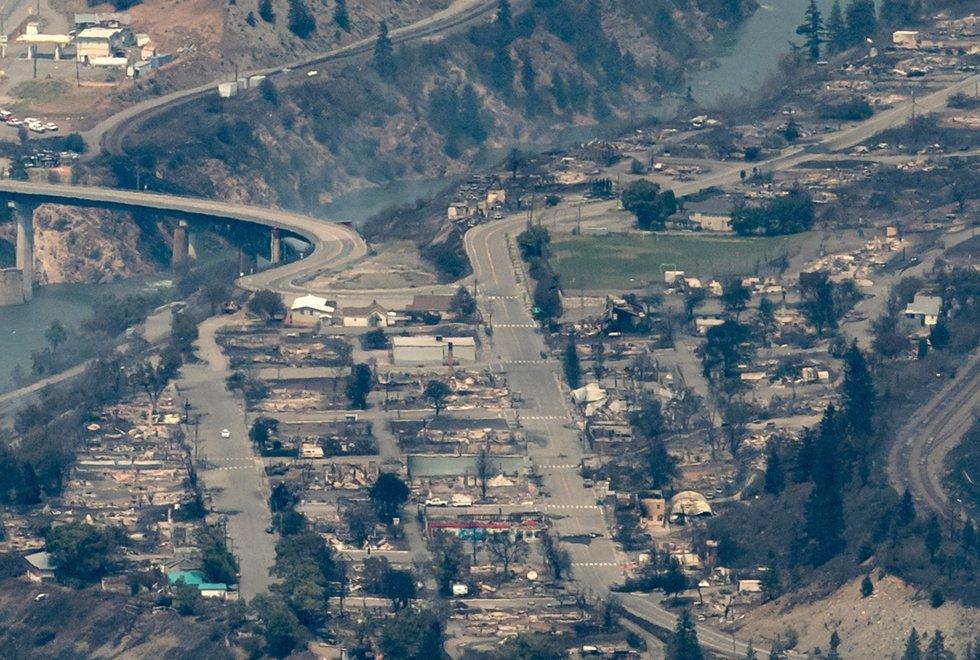An entire city has burned down, and at least hundreds of deaths have been reported due to the extreme heat in southwestern Canada and the northwestern United States. Temperatures in cities that normally have a typical Norwegian climate have been around 50 degrees.
At the same time, heat waves are causing problems in Iraq and high temperatures in several parts of the world.
It has previously been warned that heat waves that exceed the limit of what humans can tolerate will occur if emissions are not cut in this century.
In the draft of a report to be released UN’s climate panel in February next year, it is warned that it may happen soon. Heat waves that kill millions who have no opportunity to escape from the scorching sun.
If the temperature rise from the pre-industrial level reaches 1.5 degrees, which is 0.4 degrees above the current level, 14 percent of the earth’s population will experience severe heat waves at least once every five years, the report states.
If you go up half a degree, to the so-called togradersmålet , it will affect another 1.7 billion people.
Million cities in developing countries
The areas hardest hit, according to the report, are growing giant cities in developing countries, from Karachi in Pakistan to Kinshasa in Congo, Manila in the Philippines and Lagos in Nigeria.
It will not just be the degree that poses the threat. Heat combined with high humidity makes it more dangerous. It turns the air around you into a steam bath and can be measured in what is called wet ball temperature.
Experts believe that healthy people can not survive if the wet ball temperature exceeds 35 degrees, even in the shade with access to drinking water.
– When the wet ball temperature becomes extremely high, there is so much moisture in the air that sweat loses its effect to remove the excess heat in the body, says Colin Raymond, lead researcher on a recent study on heat waves.
– At one point, perhaps after six hours or more, this will lead to organ failure and death if you do not have access to artificial cooling, he says.
Climate changes
This means that heat waves with far lower temperatures than those we currently see in Canada and the USA could be more deadly.
The elderly and the sick are particularly vulnerable in the heat waves.
According to researchers at the London School of Hygiene & Tropical Medicine, 37 percent of the world’s heat deaths are due to climate change.
Several, including US President Joe Biden, have pointed to climate change as the cause of the heat wave in the US and Canada.
The temperature of the earth has risen by 1.1 percent from pre-industrial times. In the Paris Agreement, world leaders pledged to keep the temperature rise below 2 degrees, preferably 1.5 degrees.
30 lethal days a year
Even if that goal is reached, millions of people in major cities in Africa and Asia will be affected by at least 30 fatal hot days a year by 2080, the UN report warns.
“In these regions, the urban population is growing dramatically, and the threat of fatal heat is threatening,” said Steffen Lohrey, lead researcher in a study cited in the report.
His calculations have not taken into account the metropolitan effect, which means that the temperature in a large city is on average 1.5 degrees higher in a heat wave. This is because asphalt and buildings absorb heat, while density and other factors also come into play.
Sub-Saharan Africa in particular is particularly vulnerable.
– It is a center for heat waves, says Luke Harrington, researcher at Oxford’s Climate Institute.
In central China and Asia, it is also expected that the wet ball temperature can reach a dangerous level, warns the UN report.
Difference between Europe and North America
The Mediterranean region could also be hit by deadly heat waves, and 200 million Europeans will be exposed if the temperature rises by 2 degrees.
Researchers believe that North America, which is experiencing a heat wave now, is in fact best equipped to deal with it.
– This is because in North America most buildings have air conditioning and are well-insulated, modern buildings. There is a difference in the infrastructure, says Jeff Stanaway, a researcher at the global health institute IHME.
– .

:quality(80)/cdn-kiosk-api.telegraaf.nl/d4c099d2-db21-11eb-8f91-0218eaf05005.jpg?resize=150%2C150&ssl=1)
